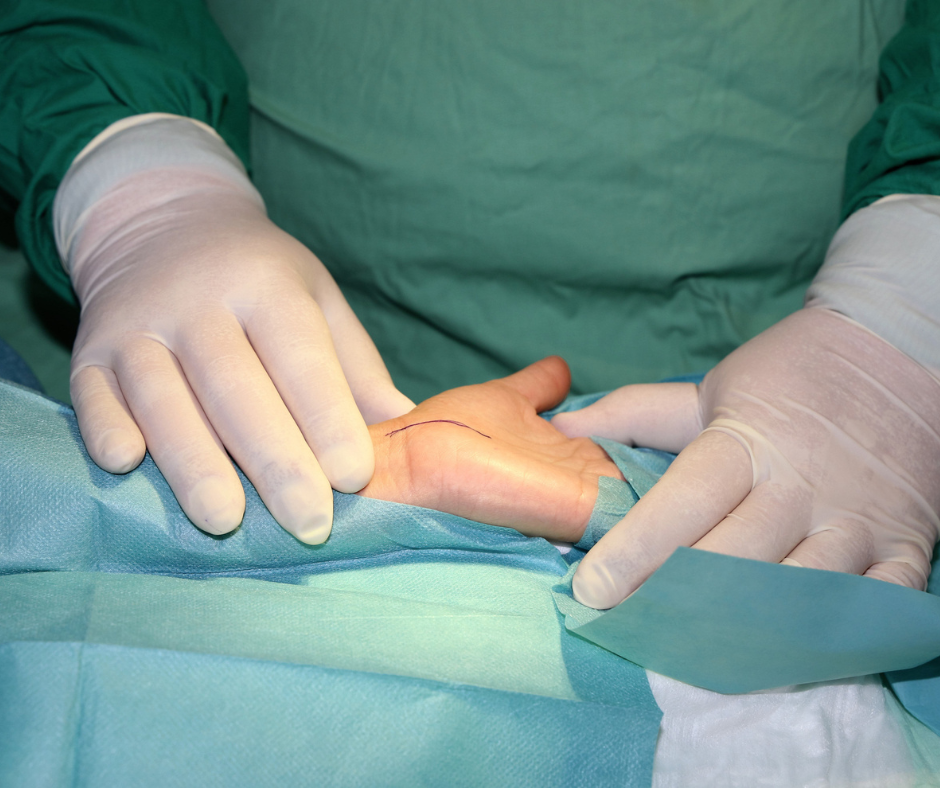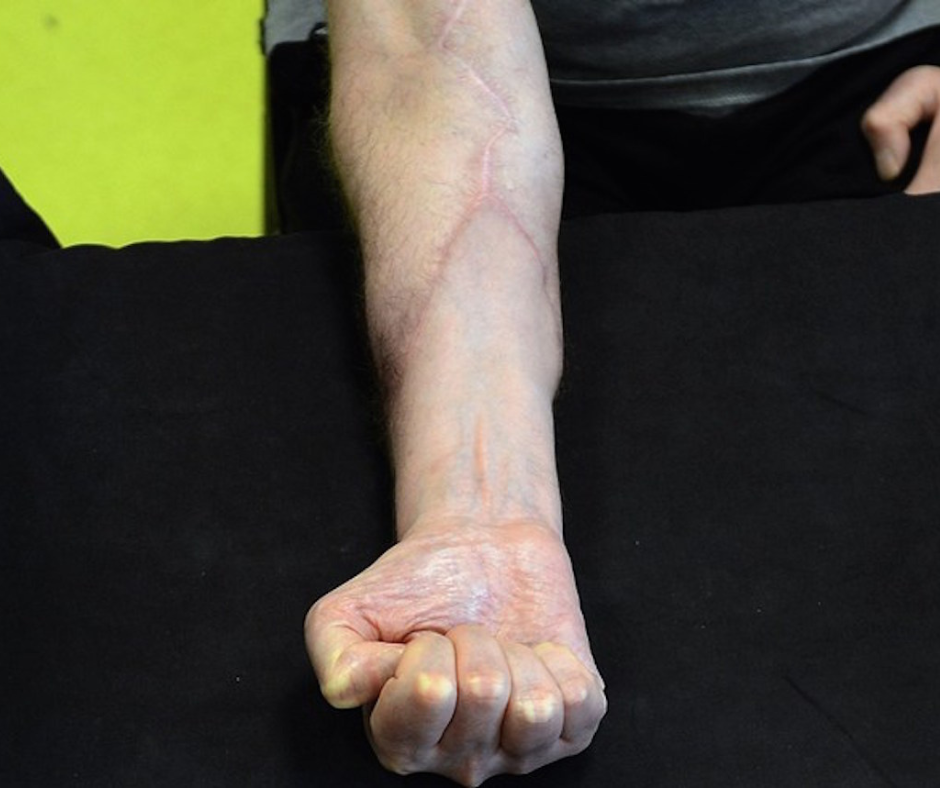Hand Joint Replacement Surgery
Hand Joint Replacement Surgery

Hand joint replacement surgery, also known as joint arthroplasty, is a surgical procedure that aims to replace damaged or worn-out joints in the hand. This procedure is commonly performed to alleviate pain and improve hand function in individuals with degenerative diseases such as osteoarthritis and rheumatoid arthritis. By undergoing hand joint replacement surgery and restoring the damaged joint surfaces with synthetic material, joint replacement surgery enables patients to regain freedom of movement and experience less pain. In this comprehensive guide, we will explore the various aspects of hand joint replacement surgery, including the types of joints that can be replaced, the surgical techniques involved, and the post-operative rehabilitation process.
Types of Hand Joints Suitable for Replacement
Hand joint replacement surgery can be performed on different joints in the hand, depending on the extent of damage and the specific condition being treated. The following are the key joints that are commonly targeted for joint replacement:
The MCP joints, also known as the knuckles, are the largest joints in the hand and are critical for finger function. These joints are often affected by conditions such as rheumatoid arthritis, which can cause severe damage and pain. Joint replacement in the MCP joints aims to eliminate pain and restore mobility. However, the success of the procedure depends on the availability of healthy soft tissue for reconstruction around the implant.
The PIP joints, located in the middle of the fingers, are prone to stiffness and loss of motion, typically due to osteoarthritis. Joint replacement surgery may be considered to relieve symptoms and improve flexibility, particularly in the middle and ring fingers that require dexterity for gripping. Fusion of the PIP joints is also a viable option, as it provides better tolerance for stiffness and offers a reliable long-term solution.
Arthritis pain in the joints near the ends of the fingers, known as the DIP joints, can be effectively treated with a procedure called arthrodesis. This surgery involves fusing the bones to create a stable, pain-free joint. While finger mobility may not be dramatically improved, patients typically experience a reduction in pain, allowing for better function and engagement in activities that were previously limited by arthritis.
Techniques for Hand Joint Replacement Surgery:
The techniques for hand joint replacement surgery vary depending on the specific joint being treated. Let’s explore the procedures commonly employed for different hand joints:
To perform a knuckle joint replacement, an incision is made along the back of the finger joint. The joint surfaces of the bones are then removed, creating a flat surface for the new joint implant. A small canal is drilled into both bones, and the prosthesis is inserted. The new joint is designed to replicate the functions of the natural articular cartilage, enabling smooth movement and reducing pain. After the surgery, the finger is stitched together, bandaged, and placed in a protective splint for a specified period to promote healing.
In cases where the PIP joint requires replacement, surgeons may opt for silicone interpositional arthroplasty. This procedure involves using silicone rubber implants with flexible hinges and stems that provide stability. The Swanson and Sutter implants are among the well-established silicone joint replacements used for PIP joints. The success of the surgery depends on the patient’s condition, particularly in individuals with rheumatoid arthritis and older, lower-activity patients.
The basal joint of the thumb, where it meets the wrist, is prone to wear and tear due to high stresses during normal activities. Arthritis in this joint is commonly seen in women and often requires joint replacement surgery. While attempts at silicone replacement have not yielded desired results, the ligament reconstruction-tendon interposition procedure (LRTI) has proven to be effective. LRTI involves using the patient’s own tendon to stabilize the thumb and resurface the joint, providing stability and pain relief.
Unlike other hand joints, joint replacement in the wrist is less common and typically reserved for specific cases of osteoarthritis or rheumatoid arthritis. Most patients with wrist arthritis are better suited for joint cleaning or fusion procedures rather than joint replacement. Currently, wrist-joint prostheses are mostly investigational and limited to extremely low-activity patients. Further research and advancements are needed to establish more reliable techniques and prostheses for wrist joint replacement.
Rehabilitation after the Hand Joint Replacement surgery : Restoring Hand Function
Following hand joint replacement surgery, a comprehensive post-operative rehabilitation program is crucial for achieving optimal outcomes. Physiotherapy plays a vital role in restoring hand function, minimizing pain, reducing swelling, and improving range of motion and strength. The rehabilitation process is typically divided into several stages, each focusing on specific goals and interventions:

During the initial stage of rehabilitation post the hand joint replacement surgery , the primary objective is to minimize pain and swelling while encouraging the use of the finger in normal movement patterns. Cryotherapy (ice), analgesia (painkillers), and passive controlled range of motion exercises are commonly utilized to manage pain and promote early mobilization. As the healing progresses, gentle active finger range of motion exercises, wrist range of motion exercises, and wound monitoring are incorporated into the treatment plan. Splints may be used to provide a constant stretch on the tendons and improve range of motion.
After three weeks of rehabilitation, the splint can be removed, and the focus shifts towards restoring movement and building strength in the hand. Passive and active range of motion exercises are continued, scar management techniques are implemented, and soft tissue massage is used to break down scar tissue. Heat therapy and gentle strengthening exercises are introduced to further improve flexibility and strength.
During the later stages of rehabilitation, significant improvements in movement, strength, and function are expected. Treatment intensifies to maximize hand mobility and restore functional use. Active and passive range of motion exercises are continued, with emphasis on reaching the end range of motion. Progressive strengthening exercises, isolated strengthening of replaced joints, hand dexterity training, and functional activity exercises are incorporated into the treatment plan. Physiotherapists also provide long-term care advice to ensure continued success and maintenance of hand function.
As with any surgical procedure, hand joint replacement surgery comes with potential complications and risks. While the majority of patients experience positive outcomes, it is important to be aware of possible issues that may arise. These include:
1. Failure to relieve pre-operative pain
2. Inadequate improvement or maintenance of joint range of motion
3. Extensor tendon injury leading to limited joint extension
4. Infection, requiring further treatment and potential removal of the prosthesis
5. Loosening of the prosthesis, necessitating revisional surgery
6. Wound healing problems
7. Dislocation or subluxation of the joint
8. Implant fracture
9. Finger deformity and joint contracture
Hand joint replacement surgery cost
When it comes to unilateral or single wrist and hand surgery, India offers a range of affordable options. The cost of such procedures in the country typically falls within the range of approximately 2000 to 7500 USD. With various hospitals across India providing these services, patients have access to cost-effective solutions for their wrist and hand surgical needs.
Conclusion
Hand joint replacement surgery offers a promising solution for individuals suffering from debilitating hand arthritis. By replacing damaged or worn-out joints with synthetic materials, this surgical procedure aims to alleviate pain, improve mobility, and restore hand function. From knuckle joints to thumb basal joints, the advancements in surgical techniques and prostheses have provided effective options for patients with various hand joint conditions. Combined with a comprehensive post-operative rehabilitation program, hand joint replacement surgery enables individuals to regain independence and engage in daily activities with less pain and improved function. If you are considering hand joint replacement surgery, consult with a healthcare professional to determine the best course of action for your specific condition.


